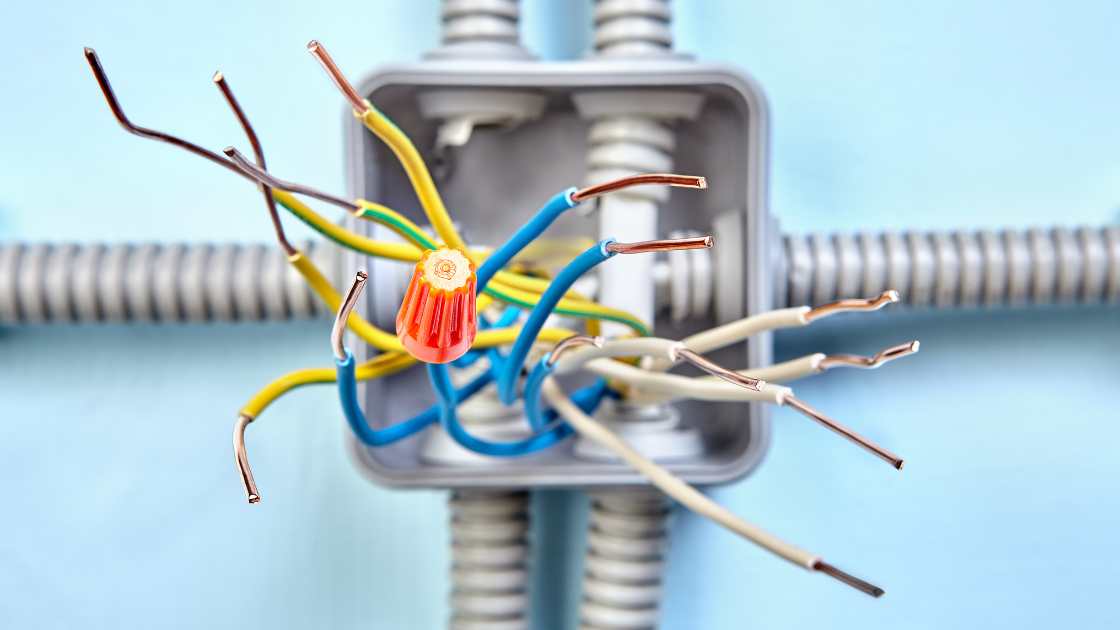
How to Connect 6 Gauge Wire in a Junction Box
When it comes to electrical wiring, precision and safety are paramount. One common scenario that many DIY enthusiasts and electricians encounter is connecting 6-gauge wire in a junction box. Whether you’re setting up a new circuit or making repairs, it’s crucial to get this right. In this guide, we’ll walk you through the steps to safely and effectively connect 6-gauge wire in a junction box.
There are 8 Effective Steps Safely Connect 6-Gauge Wire in a Junction Box
Gather Your Tools and Materials
Before diving into the wiring process, gather all the necessary tools and materials. Here’s what you’ll need:
- 6-gauge electrical wire
- Wire stripper/cutter
- Screwdriver
- Wire connectors (wire nuts)
- Junction box
- Wire clamps (if required)
- Safety gloves and goggles
Safety First
Before you begin, remember that working with electricity can be dangerous. Ensure that the power to the circuit is turned off at the breaker panel to prevent any electrical accidents. Additionally, wear safety gloves and goggles to protect yourself from potential sparks or electrical shocks.
Select the Appropriate Junction Box
Choose a junction box that suits your specific wiring needs. Ensure it’s large enough to comfortably accommodate the 6-gauge wire, connectors, and any additional wires you’ll be connecting. The box should also be rated for the intended electrical load.
Prepare the Wires
Start by stripping the insulation from the ends of the 6-gauge wires using a wire stripper. Carefully expose about 3/4 inch (19mm) of the wire at each end. Make sure to follow the manufacturer’s recommendations for stripping length.
Connect the Wires
Inside the junction box, you’ll find several wire connectors (wire nuts) for joining the wires. Begin by connecting the 6-gauge wires to each other or to other wires if you’re extending a circuit. Here’s how:
- Hold the stripped ends of the wires together, ensuring they’re straight and aligned.
- Twist the wires together clockwise. This ensures a secure connection.
- Once the wires are twisted together, place a wire nut over them. Screw the wire nut clockwise until it’s snug. Make sure it’s tight enough to secure the wires but not so tight that it damages them.
- After securing the connection with a wire nut, tug gently on each wire to ensure they are firmly connected.
Insulate and Secure the Connection
To prevent any exposed wires or loose connections inside the junction box, use electrical tape to wrap around the wire nut and the wires. This provides an extra layer of protection. Additionally, you can use wire clamps to secure the wires inside the box and prevent them from moving around.
Close the Junction Box
Once you’ve made all the necessary connections and ensured they are secure and insulated, close the junction box. Tighten the screws on the box cover to seal it properly.
Test the Circuit
After completing the wiring, turn the power back on at the breaker panel and test the circuit to ensure it’s functioning correctly. Use a voltage tester to check for any issues or shorts.
FAQs
Can I Connect Multiple 6-Gauge Wires in a Single Junction Box?
Yes, you can connect multiple 6-gauge wires in a single junction box, but there are important considerations. Ensure that the junction box is rated for the number of wires and the total electrical load you plan to connect. Also, use proper wire connectors (wire nuts) to join the wires securely. Twist the stripped ends of the wires together clockwise, then use a wire nut to secure the connection. Insulate the connection with electrical tape and follow local electrical codes and safety guidelines.
Do I Need to Turn Off the Power Before Connecting 6-Gauge Wire in a Junction Box?
Yes, it’s absolutely crucial to turn off the power before working with 6-gauge wire or any electrical connections in a junction box. To do this, switch off the circuit breaker or remove the fuse associated with the circuit you’re working on. This step is essential to prevent electrical shocks and accidents. Always double-check that the power is off using a voltage tester before starting any electrical work.
Can I Extend a Circuit Using 6-Gauge Wire in a Junction Box?
Yes, you can extend a circuit using 6-gauge wire in a junction box. To do this, follow these steps:
- Turn off the power to the circuit at the breaker panel.
- Locate the existing circuit wires and connect the new 6-gauge wire to them using wire connectors (wire nuts) as described in the main article.
- Insulate the connections with electrical tape.
- Secure the wires inside the junction box using wire clamps if required.
- Close the junction box and tighten the cover screws.
- Turn the power back on and test the circuit to ensure it functions correctly.
Conclusion
Connecting 6-gauge wire in a junction box might seem like a daunting task, but with the right tools and a methodical approach, it can be done safely and effectively. Always prioritize safety, follow local electrical codes, and if you’re unsure about any step, consult a qualified electrician. Properly executed, your electrical connections will provide reliable power for years to come.





